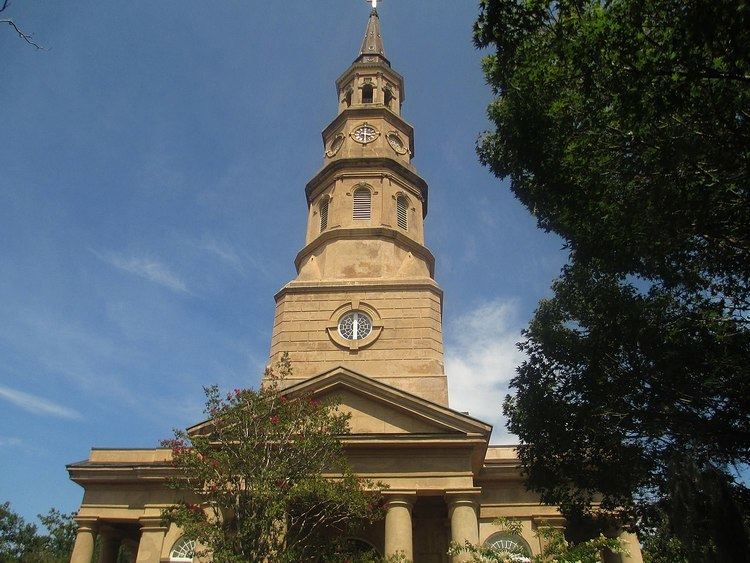NRHP Reference # 73001695 Designated NHLDCP October 9, 1960 Phone +1 843-722-7734 Architect Edward Brickell White | Designated NHL November 7, 1973 Opened 1836 Added to NRHP 7 November 1973 | |
 | ||
Location 142 Church Street, Charleston, South Carolina Built 1835-1836, building; steeple, 1848-1850 Part of Charleston Historic District (#66000964) Address 142 Church St, Charleston, SC 29401, USA Burials John C. Calhoun, Charles Pinckney, Alexander Garden Similar St Michael's Episcopal, Huguenot Church, Circular Congregational Church, Dock Street Theatre, Powder Magazine Profiles | ||
St. Philip's Church is an historic church at 142 Church Street in Charleston, South Carolina. Its National Historic Landmark description states: "Built in 1836 (spire completed in 1850), this stuccoed brick church features an imposing tower designed in the Wren-Gibbs tradition. Three Tuscan pedimented porticoes contribute to this design to make a building of the highest quality and sophistication." On November 7, 1973, it was added to the National Register of Historic Places and designated a National Historic Landmark.
History
Established in 1681, St. Philip's is the oldest religious congregation in South Carolina. The first St. Philip's Church, a wooden building, was built between 1680 and 1681 at the corner of Broad and Meeting streets on the present day site of St. Michael's Episcopal Church. It was damaged in a hurricane in 1710 and a new St. Phillip's Church was begun a few blocks away on Church Street. After being delayed it was finished in 1723 but burned to the ground in 1835. Work on the present church was begun that same year and completed the next. The steeple was added between 1848 and 1850.
A prominent early rector of St. Philip's was Rev. Thomas Frost, a fellow of Caius College, Cambridge, who became rector of St. Philip's in 1785. Rev. Frost died in 1804 at 46 years of age. Rev. Thomas Downes Frost, son of the first rector Frost, was elected assistant minister of St. Philip's on March 12, 1815. The second Rev. Frost died an early death at age 26 in 1819.
The wife of another early rector, Gideon Johnston, was Henrietta Johnston, who became the first recorded female artist in the American colonies. Another artistic first with connections to the church was Mary Roberts, the first female American miniaturist, whose burial was recorded in the register in 1761.
The tower of St. Philip's served for many years as the rear tower of a set of range lighthouses serving to guide mariners into Charleston's harbor; the front tower of the range was located on Fort Sumter. The church is one of only two in the United States known to have served such a function.
